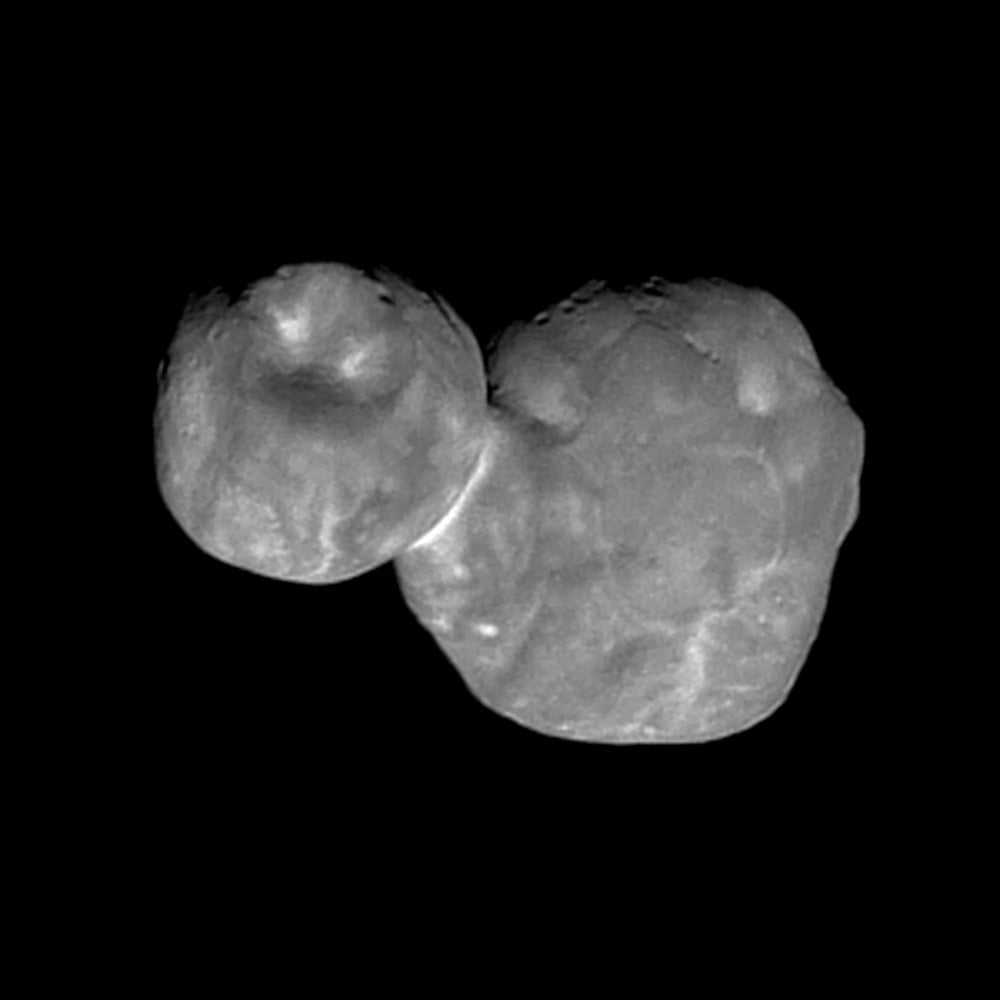
Primitive ices and gas from the earliest days of the solar system can remain trapped inside deep-space objects like comets and Kuiper Belt Objects (KBOs) for billions of years. That’s the conclusion according to a new study published May 1 in Icarus, which investigated the mysterious properties of deep-space bodies like the Kuiper Belt Object 486958 Arrokoth, which NASA’s New Horizon’s probe flew by on Jan. 1, 2019.
If confirmed, the surprising finding could challenge long-held beliefs about how poorly distant objects in the solar system preserve volatile ices that were present during their formation. The new study suggests that such celestial bodies could preserve primordial materials from the dawn of the solar system in a nearly perpetual state of deep freeze.
“We’ve shown here in our work, with a rather simple mathematical model, that you can keep these primitive ices locked deep within the interiors of these objects for really long times,” said Sam Birch, a planetary scientist at Brown University and one of the paper’s co-authors, in a press release. “Most of our community had thought that these ices should be long lost, but we think now that may not be the case.”
Putting ancient ice in cold storage
For the study, researchers utilized a newly developed mathematical model to explore the evolution of comets and Kuiper Belt Objects, which are ancient, icy bodies that populate a doughnut-shaped region of space that extends far beyond Neptune’s orbit.
This study primarily focused on Arrokoth, a double-lobed KBO known as one of the solar system’s most primitive bodies. When the New Horizons spacecraft flew past this ancient object in 2019, it found no traces of carbon monoxide (CO), a result that initially suggested even such distant, cold objects, which have never traversed the inner solar system, might be depleted of ancient ices. The latest findings challenge this assumption, proposing that these ices can be preserved within the object’s porous, sponge-like interior, effectively maintaining them in a state of cold storage that contradicts previous thermal evolutionary models.
“We are basically saying that Arrokoth is so super cold that for more ice to sublimate — or transform directly from solid into a gas, skipping the liquid phase within it — that the gas it sublimates into first has to have travel outwards through its porous, sponge-like interior,” Birch said. “The trick is that to move the gas, you also have to sublimate the ice. So what you get is a domino effect: It gets colder within Arrokoth, less ice sublimates, less gas moves, it gets even colder, and so on. Eventually, everything just effectively shuts off, and you’re left with an object full of gas that is just slowly trickling out.”
Implications for other icy worlds in our solar system
The possibility that objects like Arrokoth can preserve their icy cores in such pristine conditions over billions of years could open up new avenues for better understanding the behavior and evolution of distant, icy bodies like comets and other KBOs.
“The key thing is that we corrected a deep error in the physical model people had been assuming for decades for these very cold and old objects,” said Orkan Umurhan, senior research scientist at the SETI Institute and co-author of the paper. “This study could be the initial mover for reevaluating the comet interior evolution and activity theory.”
Additionally, the study may significantly influence future space missions, such as NASA’s Comet Astrobiology Exploration Sample Return (CAESAR) mission. Insights from this research could help mission planners refine their strategies for collecting and analyzing cometary materials, which could deepen our understanding of the building blocks of our solar system — and possibly life itself.
A new perspective on comet and KBO evolution
By challenging and potentially correcting a fundamental error in how scientists model the behavior of cold and old objects in space, the new work may open the door to reevaluating how comets evolve and interact over astronomical timescales. This, in turn, could reshape our understanding of the solar system’s dynamics and the evolutionary history of its smaller bodies.
If the results are confirmed, the retention of volatile ices within objects like Arrokoth wouldn’t be just a minor footnote — it would serve as a significant step toward understanding the processes that have shaped our solar system since its inception.
“There may well be massive reservoirs of these primitive materials locked away in small bodies all across the outer solar system — materials that are just waiting to erupt for us to observe them or sit in deep freeze until we can retrieve them and bring them home to Earth,” said Birch.









